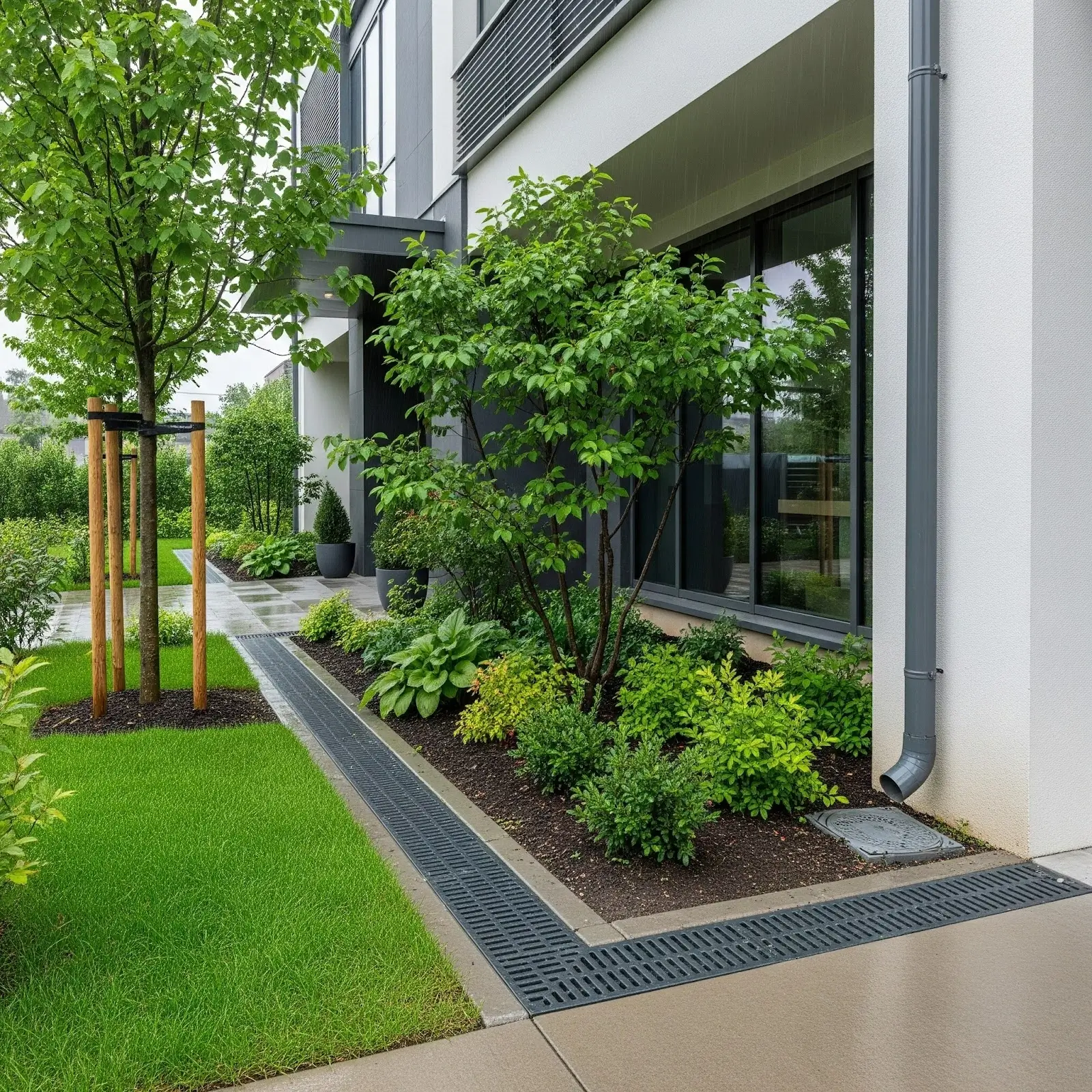Your gutter system plays a crucial role in protecting your home or commercial building from water damage by channeling rainwater away from the roof and foundation. But the work doesn’t stop at the gutters themselves. Underground drainage systems often connect to gutters to carry water safely out of sight, preventing flooding, erosion, and costly structural issues.
Understanding how these two systems work together can help you spot potential problems early and ensure your property stays dry and secure year-round.
What Is Underground Drainage?
Underground drainage refers to a network of pipes and drains installed below ground to carry water away from your property. This system collects water from gutters, downspouts, surface drains, or sump pumps and directs it toward safe discharge points such as storm drains, dry wells, or natural water bodies.
For both residential and commercial properties, underground drainage prevents water from pooling around foundations, walkways, parking lots, or landscaping areas.
How Does Underground Drainage Connect to Gutters?
Typically, gutters collect rainwater from the roof and funnel it through downspouts. These downspouts may connect directly into underground drainage pipes rather than emptying onto the ground. Here’s how the connection generally works:
- Downspout to Pipe Transition: A connector or adapter links the downspout’s bottom to an underground drain pipe, ensuring a sealed, leak-proof connection.
- Drainage Pipes: These pipes, often made of PVC or corrugated plastic, carry water away underground.
- Catch Basins or Drain Boxes: Sometimes installed near the downspout entry point, these catch basins trap debris to prevent clogging underground.
- Outlet Point: The underground system discharges water at a designated area, such as a storm sewer, dry well, or drainage ditch.
Why Is Proper Connection Important?
When gutters and underground drainage systems are properly connected and maintained, several benefits follow:
- Foundation Protection: Redirecting water away reduces soil saturation around foundations, helping prevent cracks, settling, or basement leaks.
- Preventing Surface Flooding: Water that would otherwise pool on driveways, sidewalks, or parking lots is safely carried away.
- Landscape Preservation: Avoids erosion or damage to plants and garden beds caused by uncontrolled runoff.
- Avoiding Water Damage: Proper drainage lowers risks of water infiltration into buildings and the associated repair costs.
Improper or broken connections can lead to leaks, backups, and water pooling where it shouldn’t.
Common Issues to Watch For
- Clogged Pipes or Catch Basins: Leaves, dirt, and debris can block underground drains, causing water to back up.
- Disconnected or Damaged Pipes: Ground movement or poor installation may cause pipes to separate or crack.
- Improper Sloping: Drainage pipes need a slight downward slope to encourage water flow; otherwise, water may stagnate.
- Overflow onto Walkways or Foundations: If underground drainage fails, water may flow directly from downspouts onto surfaces, causing damage.
Regular inspection and maintenance can prevent these problems.
Maintenance Tips for Homeowners and Property Managers
- Check Gutters and Downspouts: Keep them clear of debris to ensure water flows freely into the underground system.
- Inspect Drainage Access Points: Clean catch basins or drain boxes to remove leaves and sediment.
- Look for Signs of Water Pooling: Areas of soggy ground near downspouts or around your building’s perimeter could indicate drainage issues.
- Schedule Professional Inspections: Especially for commercial properties, routine inspections and cleaning of underground drainage systems help avoid costly repairs.
Final Thoughts
The connection between your gutter system and underground drainage is vital to managing water safely around your property. Whether you own a home or manage commercial buildings, understanding this system and keeping it in good shape protects your investment and keeps your environment dry and safe.
Paying attention to the details—like proper installation, regular cleaning, and timely repairs—ensures your gutters and underground drains work together effectively to keep water where it belongs.



